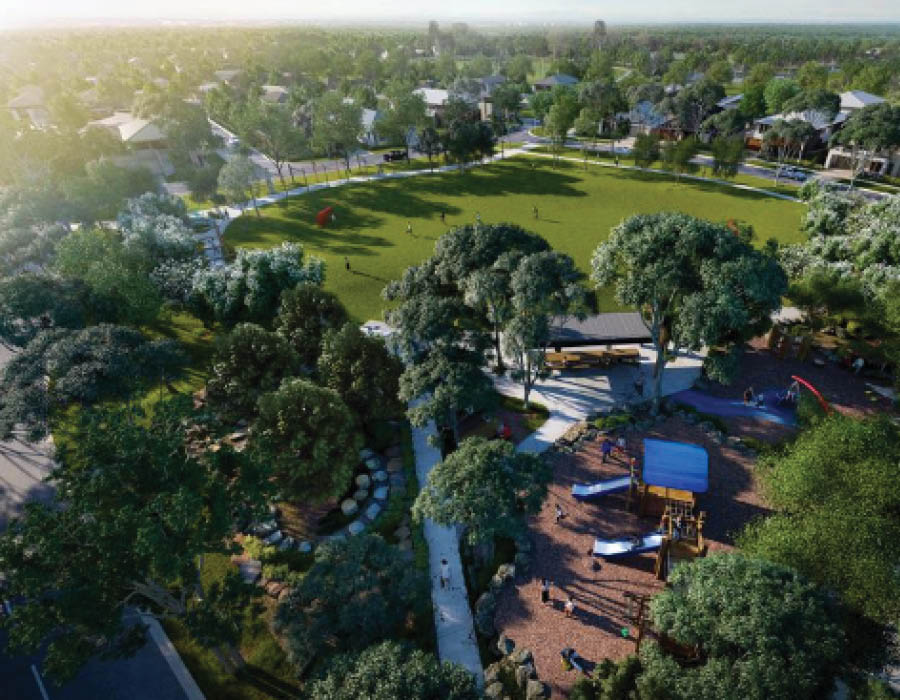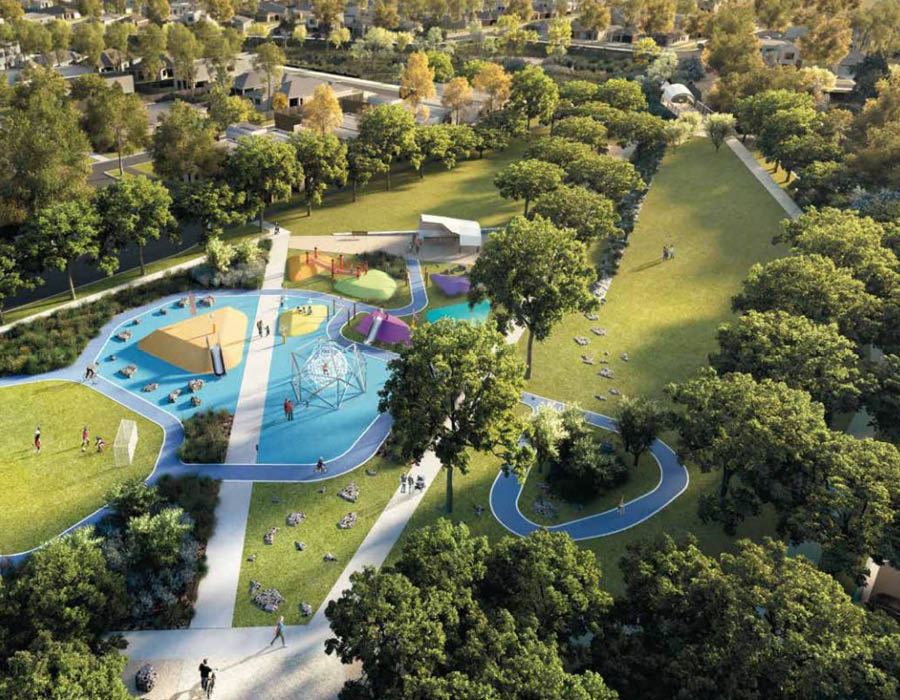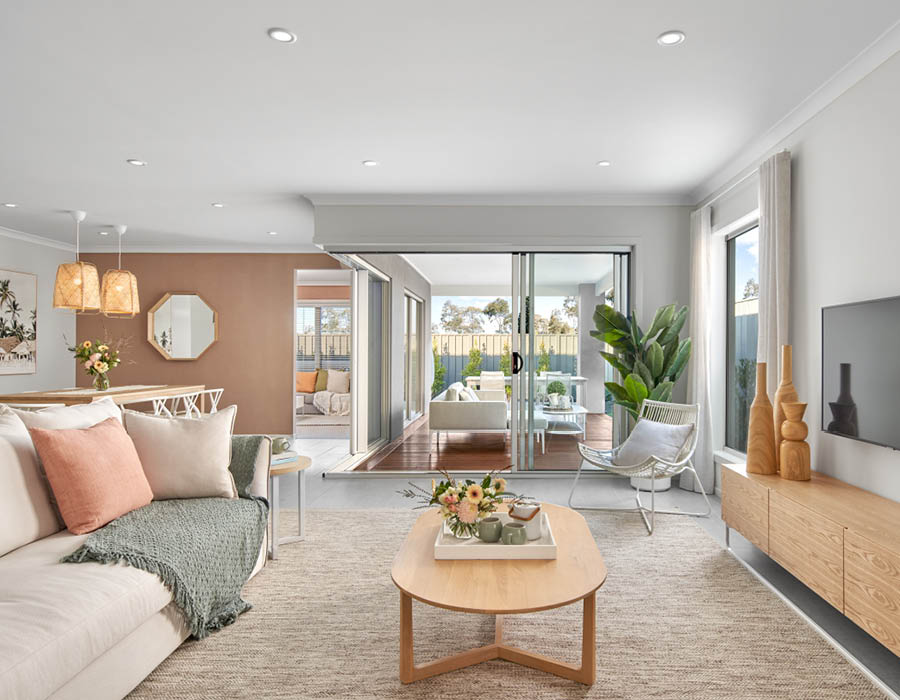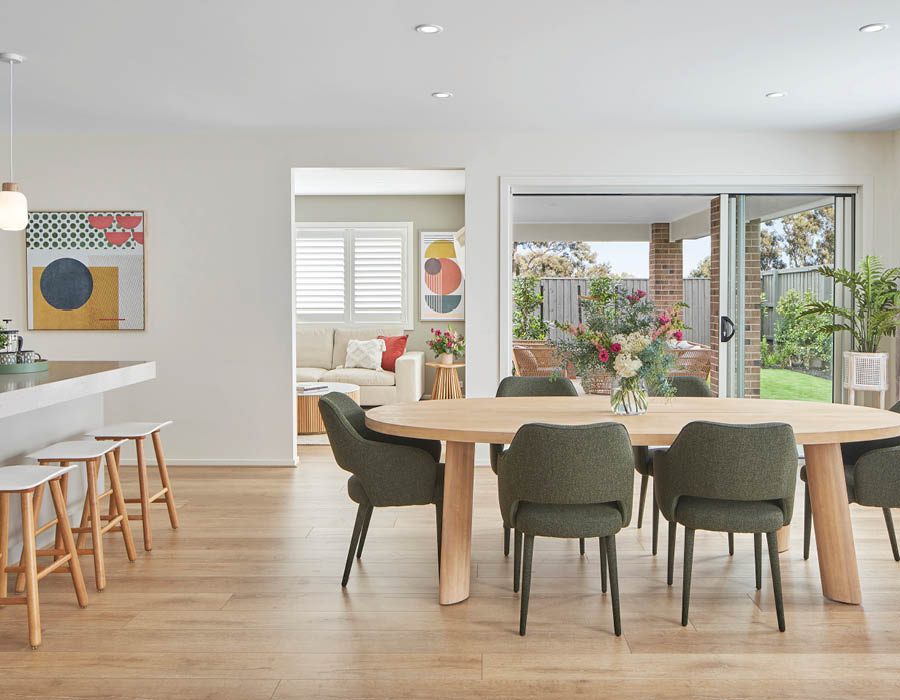There are many benefits to building a new home: you get the convenience and peace of mind of a home that’s never been lived in, coupled with the bespoke features you and your family crave as well as the latest in tech and energy-efficient solutions.
The first step in the process? Finding the perfect block of land.
With over 15 years’ experience in land development and building, Oscar Stanley, ABN Group Developments General Manager understands how pivotal it is that you invest time into finding a suitable block of land. ‘There’s not a lot of point finding the perfect home design if you can’t find the right piece of land in the right location to make the perfect floorplan possible,’ says Oscar.

‘For Boutique, it’s a simple three-step process: finance, land, and then the house.’
Once you have an idea of the budget you can afford, and your preferred suburb, it’s time to find your perfect block of land. The block you choose has many impacts on your home including the design, final cost, and time it will take to build. It’s important to find one that perfectly suits your needs – both now and in the future – especially if you want to avoid unnecessary construction and maintenance costs.
Below, Oscar outlines some specific points to consider when buying a block of land in Victoria.
1. Understand the area and land developer
Understanding the location, estate, and the land developer is key.
Research when the land will become titled and accessible for your builder. This is important as the delivery of untitled land can cause delays and push out your start time. If your block is under the construction stage then this is a great start – the closer it is to titling the less risk of delay.
Estate amenities will have a big impact on your family’s lifestyle. Parks, schools, and retail amenities can take time to deliver so if these amenities are ‘proposed’ it’s always worth asking the developer for more information on the expected timing. Also, consider if the estate has easy access to the freeway and public transport, as well as any privacy or noise concerns. Driving past the area at different times during the day will help you understand each of these potential issues.


Finally, it is important to find out how the estate will present. If it is an established project then a drive around the older stages is strongly recommended. If it is a new estate, take the initiative to do some homework on the developer.
‘It’s really important that you do your due diligence and understand the developer’s experience and track record,’ says Oscar.
‘I always suggest that our clients visit the developer’s previous projects to see how they present. If this is difficult to do our Boutique New Home Consultants are always dealing with Victoria’s best developers and can provide sound advice to ensure there are no surprises.’
Finding a builder who can recommend the best estates and locations, or that can offer house and land packages in the best areas, will remove the stress and uncertainty from the process.

‘We really are lucky to work with the best land developers who are committed to not just constructing an estate, but also investing heavily in creating places that have a thriving community,’ says Oscar.
2. Research council and developer restrictions
There are many different Councils and Developers that operate across Victoria’s growth areas which can lead to variances in restrictions that need to be considered for your home design.
This becomes particularly important when you already have a preferred floorplan and façade design in mind.
‘Councils and developers can place restrictions on features such as home size and offsets from boundaries, right down to the materials and colours you can use on your façade,’ says Oscar.
‘It’s also worthwhile checking if any overlays impact your block. For example, bushfire overlays exist in areas close to vegetation which can alter your building materials and affect the overall cost of your home,’ adds Oscar. ‘A quality builder should work with you to research these restrictions before you put down a deposit on a block, making sure you can build your dream home without compromise.’
3. Consider the block slope and dimensions
The slope and dimensions of your block will impact both your new home design and how much it will cost to construct. Generally speaking, a slope over 1 meter will mean your block will need to be cut and filled to ensure it is level, adding to your site work costs. Each block is unique, so the best way to avoid any surprises is to work with a trusted builder to understand the impacts of slope on your design.
The size and shape of your block is obviously a fundamental part of your decision making. Is your lot frontage wide enough to fit a double garage? Is your lot deep enough to fit all the rooms of your preferred design? Do you need a big backyard, or is there a park within walking distance?
‘If you’re looking at an irregular shaped block be careful as it may mean your preferred home design simply won’t fit and bespoke changes will need to be made,’ explains Oscar. ‘You can always ask a trusted builder to provide a preliminary siting to make sure your home will fit on the block.’
4. Land orientation is important
Think about how natural light will enter your home, particularly living spaces and alfresco or outdoor entertaining areas. Ensuring your home takes the best advantage of the sun not only creates light and bright spaces but can also increase the energy efficiency of your home, keeping ongoing costs down.


‘In Australia, the sun rises in the east and spends most of the time passing over the north during the day. Traditionally, we advise our clients to look for a north-facing block without too much slope, however, we understand there are many personal preferences when considering orientation,’ explains Oscar.
5. Review the Engineering Plan and Plan of Subdivision
‘When buying a block off the plan there are two key documents we recommend reviewing prior to depositing – the Engineering Plans and Plan of Subdivision. As you can’t access your block until construction is complete, these two documents are very important as they describe your block’s features,’ says Oscar.
‘Crossover locations, easements, slope, retaining walls, expected soil conditions, etc are all found between these documents and are relevant to consider as they will impact the home design and overall cost.’
‘Both of these documents can be complicated to interpret as they are highly detailed. Once again a trusted New Home Consultants can be of great assistance here to ensure you understand exactly what your block will look like once complete,’ advises Oscar.
We hope these five steps will assist you in your new home journey. If you have any queries or would like to understand more about finding the perfect lot, get in touch with one of our friendly New Homes Consultants.
Have you found ‘The One’?
Share your home journey and connect with the Boutique Instagram community by using #ourboutiquehome